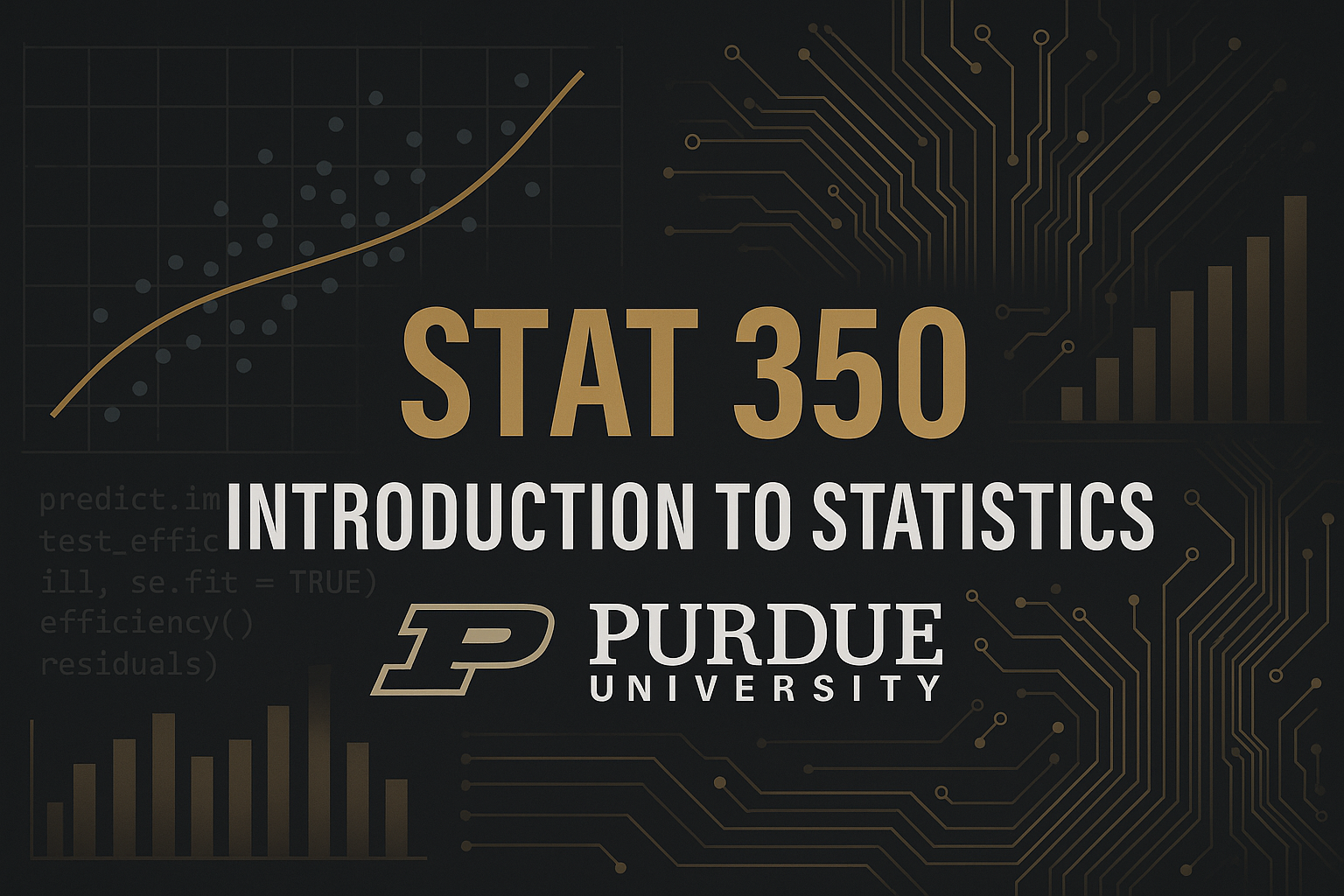
STAT 350: Introduction to Statistics
A data-oriented introduction to the fundamental concepts and methods of applied statistics. Exploratory analysis of data. Sample design and experimental design. Probability distributions and simulation. Sampling distributions. The reasoning of statistical inference. Confidence intervals and tests for one and two samples. Inference for regression, and correlation. Essential use is made of statistical software throughout. This course is designed for students that are required to perform statistical analysis in their disciplines. This course assumes a prerequisite of Calculus 2 (integration). Throughout the course, you will need to demonstrate your ability to perform integrations both in homework assignments and exams. While we may cover more advanced concepts, it’s important to note that the assessment will not extend beyond a Calculus 2 level of difficulty.
While mathematical concepts are present in this course, its focus lies on developing critical thinking skills. Understanding the underlying reasons behind concepts is emphasized before learning how to apply them. This approach aims to empower you to make informed decisions both professionally and personally, fostering wisdom and sound judgment. By prioritizing the “why” over the “how,” the course ensures a deeper comprehension of the material, enabling you to apply statistical principles more effectively in real-world scenarios.
Orientation
Exam Information
Worksheets
Computer Assignments
Chapters
- 1. Introduction to Statistics
- 2. Graphical Summaries
- 3. Numerical Summaries
- 3.1. Introduction to Numerical Summaries: Notation and Terminology
- 3.2. Measures of Central Tendency
- 3.3. Measures of Variability - Range, Variance, and Standard Deviation
- 3.4. Measures of Variability - Interquartile Range and Five-Number Summary
- 3.5. Choosing the Right Measure & Comparing Measures Across Data Sets
- 4. Probability
- 5. Discrete Distributions
- 5.1. Discrete Random Variables and Probability Mass Distributions
- 5.2. Joint Probability Mass Functions
- 5.3. Expected Value of a Discrete Random Variable
- 5.4. Varianace of a Discrete Random Variable
- 5.5. Covariance of Dependent Random Variables
- 5.6. The Binomial Distribution
- 5.7. The Poisson Distribution
- 6. Continuous Distributions
- 7. Sampling Distributions
- 8. Experimental Design
- 9. Confidence Intervals and Bounds
- 10. Hypothesis Testing
- 11. Two Sample Procedures
- 12. ANOVA
- 13. Simple Linear Regression